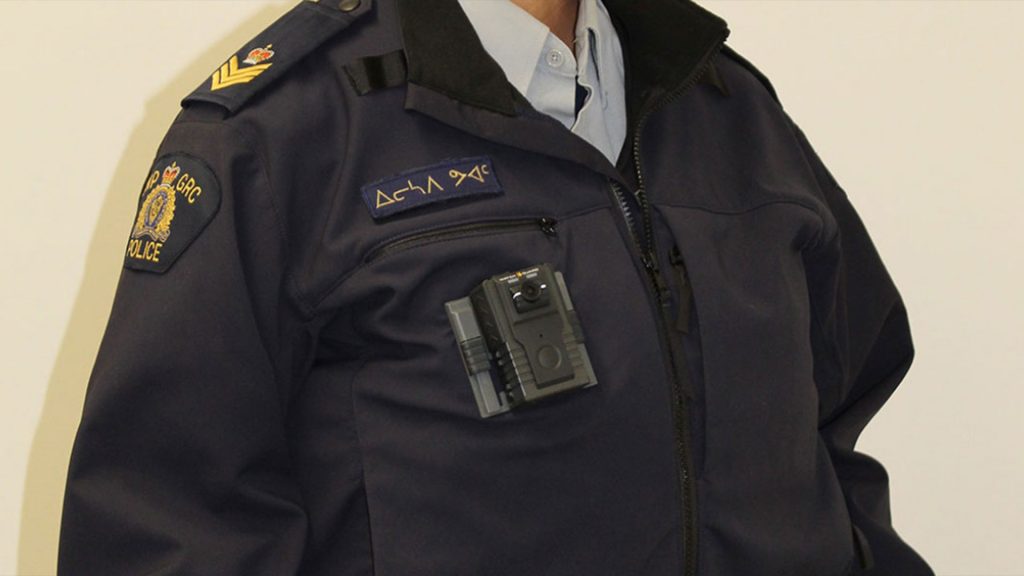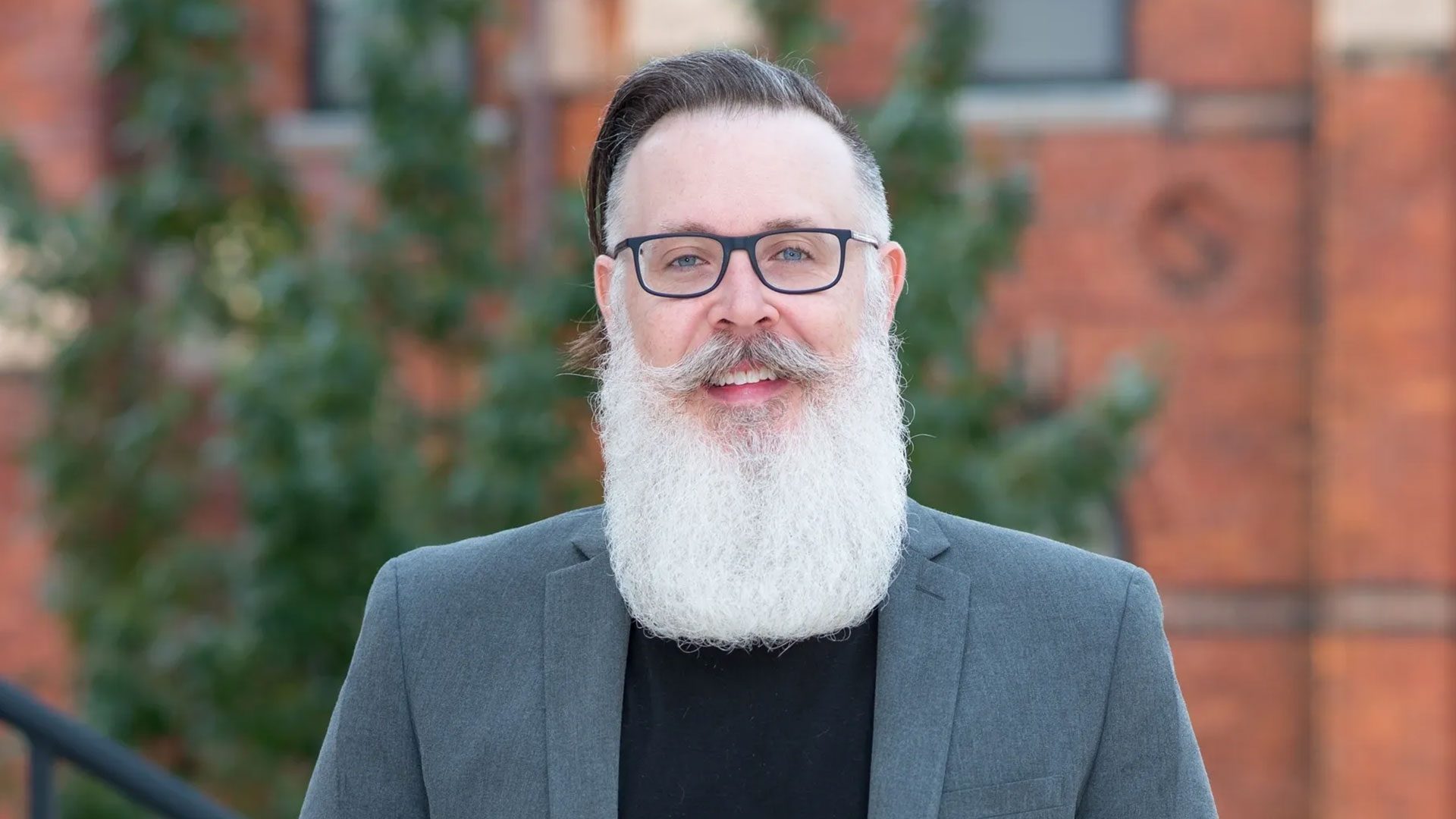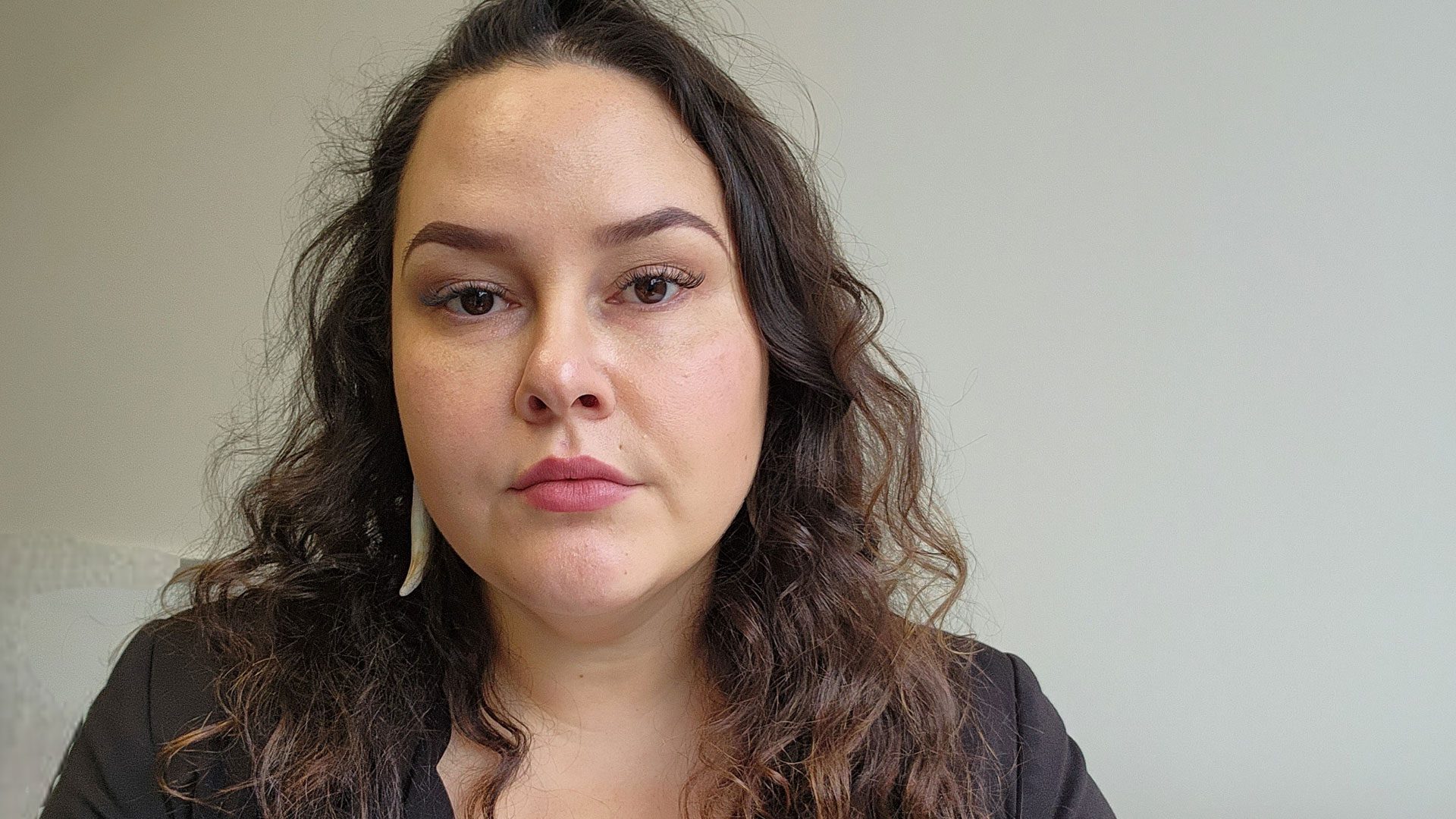
An RCMP officer shows a body-worn camera. Photo: RCMP
The RCMP are proceeding with plans to equip officers in Nunavut with body-worn cameras despite low buy-in from the public and Inuit, in particular.
Only 70 people responded to a community survey after Mounties wore the cameras for six months beginning in the fall of 2020, according to an executive summary provided by the force.
And very few of those respondents were Inuit, who make up the majority of nearly 40,000 people living in Nunavut.
It was a problem the summary flagged but won’t deter the plan from proceeding.
“A race-based analysis of the community survey responses found that there was an underrepresentation of Inuit respondents,” the summary said. “In the future, a different approach using non-police and/or third-party data collection should be considered to improve response rates.”
The results were incorporated into the national plan to roll out more body-worn camera test sites in Canada, the summary added.
Iqaluit would be among the first to receive the technology once a national program is established, it said.
Next test sites
The summary did not identify where the next test sites would be or when a national program would start. Nunavut RCMP did not respond to an email from APTN News seeking comment.
Along with Nunavut, the summary said officers in two provinces also wore the cameras.
The union representing 20,000 RCMP officers below the rank of inspector likes the idea of body-worn cameras.
“Twenty-first century policing requires 21st Century tools,” said Kevin Halwa, regional director on the Prairies for the National Police Federation. “We fully support body-worn cameras as long as” it doesn’t take officers away from policing and saddle them with extra administrative duties.
Halwa said it was the union that lobbied the federal government for money to start the pilot project. He said Nunavut was chosen as one of the rural and remote test sites due to its Arctic climate.
“If the technology can work there it can work anywhere,” he said in a telephone interview Tuesday.
Prof says technology doesn’t necessarily change police behavior
But Christopher Schneider, a sociology professor at Brandon University who is writing a book on body-worn cameras, suggested the union, RCMP and government were focusing on the wrong thing.
“I’m in love with the idea of (body-worn cameras) – like a lot of people are – but when you look at the evidence they don’t work the way in which police are often telling the public or politicians are telling the public.”
Schneider said scientific research literature shows mixed results when it comes to two components.
“It’s not conclusive. Sometimes the cameras do reduce force, sometimes they reduce civilian complaints,” he said. “Other times, there’s no statistical significance between officers wearing cameras or not wearing cameras.”
And sometimes the police used increased, Schneider added, puzzling researchers.
He suggested the financial investment was high for a device with inconsistent results.
“They cost taxpayers millions of dollars a year. Most of the money is used to house and store the data.”

The summary said 53 officers wore the cameras, captured 772 of 5,421 occurrences on 3,651 videos, and the videos were an average of nine minutes long.
It said the 525 hours of recorded video required approximately 1,246 GB of storage, six per cent of the videos were redacted for court, with every minute of video requiring approximately four minutes to redact.
Schneider said anyone captured on the video not related to an alleged crime needs to be removed or blurred to comply with privacy laws before it can be viewed in court.
He also questioned the validity of the community survey and officer survey included in the summary.
Most civilian respondents “agreed” or “strongly agreed” the cameras increased their trust in police, helped the police be more transparent, increased public safety and improved the relationship between police and the community.
About a third thought the cameras would reduce police use of force. While some raised concerns about when and where the cameras would be turned off.
Schneider said that methodology is a problem.
“To be real crass here, who cares whether the people believe the cameras are going to reduce violence or not,” he said. “The data, the evidence, the research doesn’t support it.
“This is sort of deflecting away from the scientific research literature. The RCMP are using this to deflect away and say, ‘Hey, look, the people overwhelmingly support the cameras because they believe they’re going to reduce force.”
Schneider said the low Inuit feedback was also a problem.
Not seeking out Inuit to comment ‘concerning’ says lawyer
The summary said data captured by the pilot project was compared with previous years and “did not appear to significantly differ.” However, it noted the pilot occurred during the height of the COVID-19 pandemic and lockdowns in Iqaluit.
The summary said there were “statistically significant differences” between “respondents who identified as White and respondents who identified as Inuit.”
*[bullet] Just under a third (28 per cent) of White respondents believed the cameras would reduce police force, while 69 per cent of Inuit respondents believed this.
*Most White respondents didn’t believe the cameras were an invasion of personal (75 per cent) and community (81 per cent) privacy, while fewer Inuit believed this (31 per cent for personal and 38 per cent for community).
*No White respondents reported cultural, religious or spiritual concerns with the use of cameras, but 15 per cent of Inuit did.
The summary said the work to roll out the cameras and a digital evidence management system across the country is ongoing.
It said the rollout “will apply a culturally sensitive and consultative approach, similar to the approach undertaken for the pilot project, which considered the needs of remote Indigenous communities.”

But criminal defence lawyer Victoria Perrie, who represents clients in both Nunavut and Manitoba, said the RCMP need to do better.
She suggested the RCMP commission another survey that takes into account the mistrust between Indigenous Peoples and the police.
“Knowing the social and political history of RCMP in the North, I do … find it concerning how few Inuit were surveyed. And is Iqaluit representative of all of Nunavut? No.”
She also said the majority of people arrested by the RCMP and living in remote Nunavut communities are Inuit.
“To not seek out a majority response from the Inuit population prior to rolling out a program that will see RCMP officers recording vulnerable people in times of crisis is very concerning to me,” said Perrie, who is Métis, in a telephone interview.
She also wondered how officers would operate the cameras.
“Will body-worn cameras eliminate police violence? No,” she said, “especially because they’re in control of turning them on and off.”
The RCMP say in the summary they are responsible for saving, storing and editing the video for use in court cases.
“If the intention of the body-worn cameras is in any part to ensure RCMP’s compliance with policing standards or reducing the amount of violence perpetrated by RCMP,” Perrie said, “I would like to see that the body-worn camera policy…require continuous recording.”
The RCMP is in the process of obtaining 10,000 to 15,000 body worn cameras.
The summary said officers were “generally satisfied” with the overall performance of the equipment, and “indicated the cameras made them feel safer on the job.”
Most officers, the summary said, supported adopting the cameras for all frontline officers.









